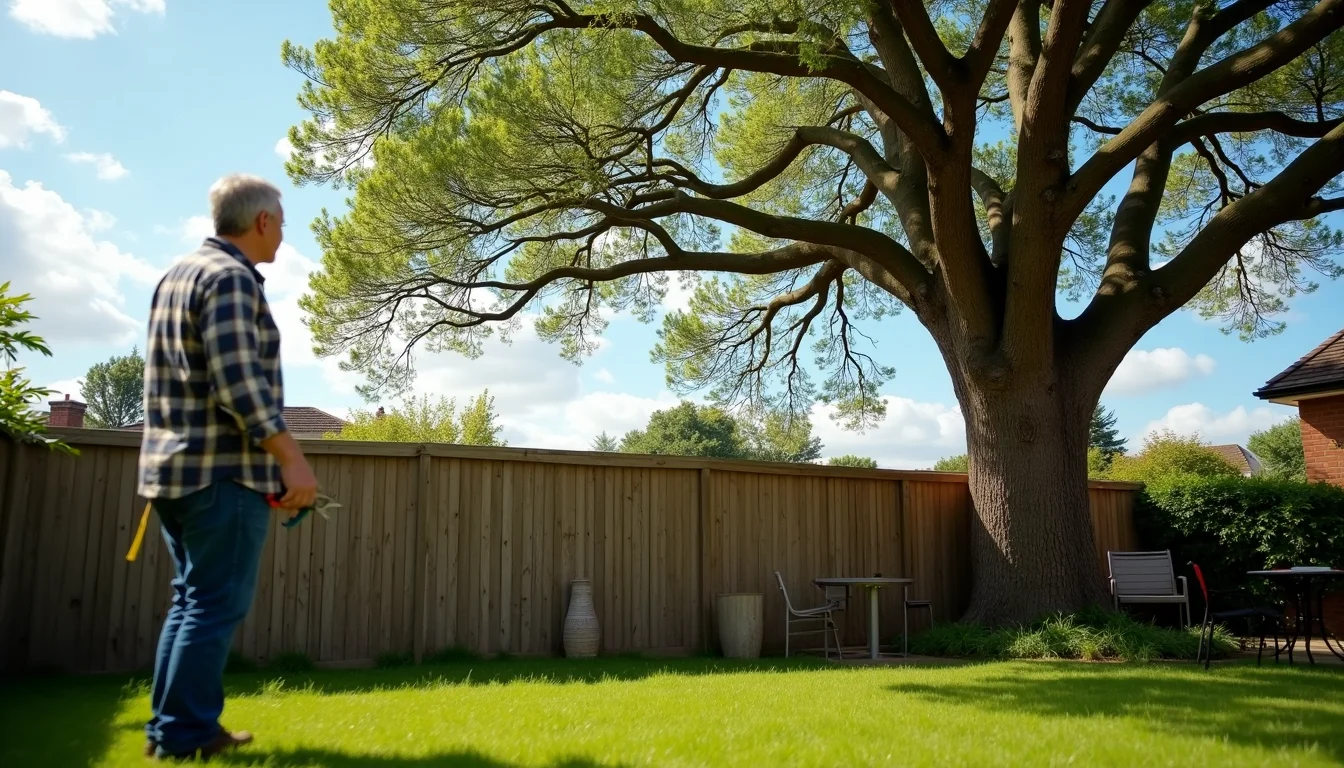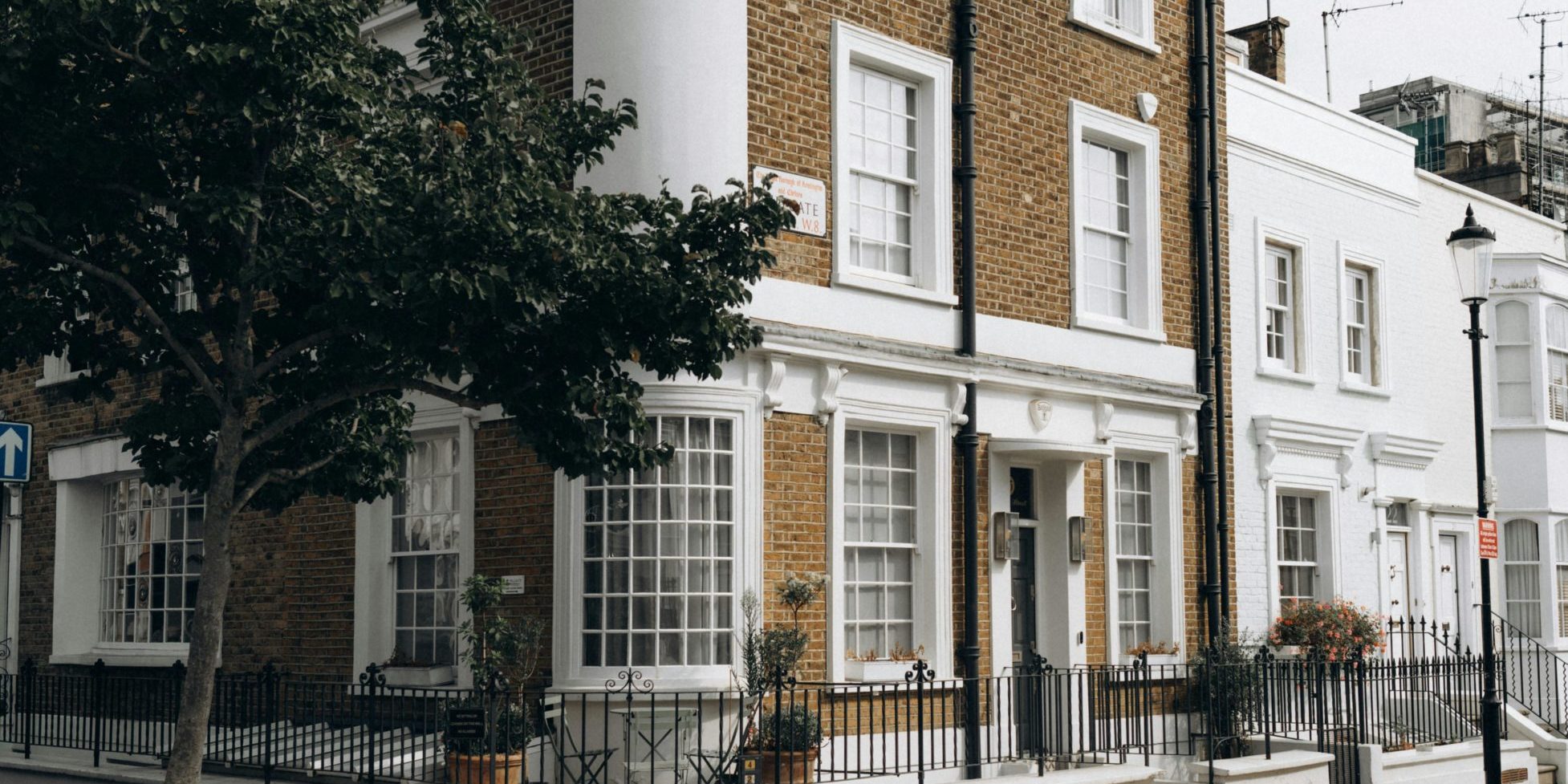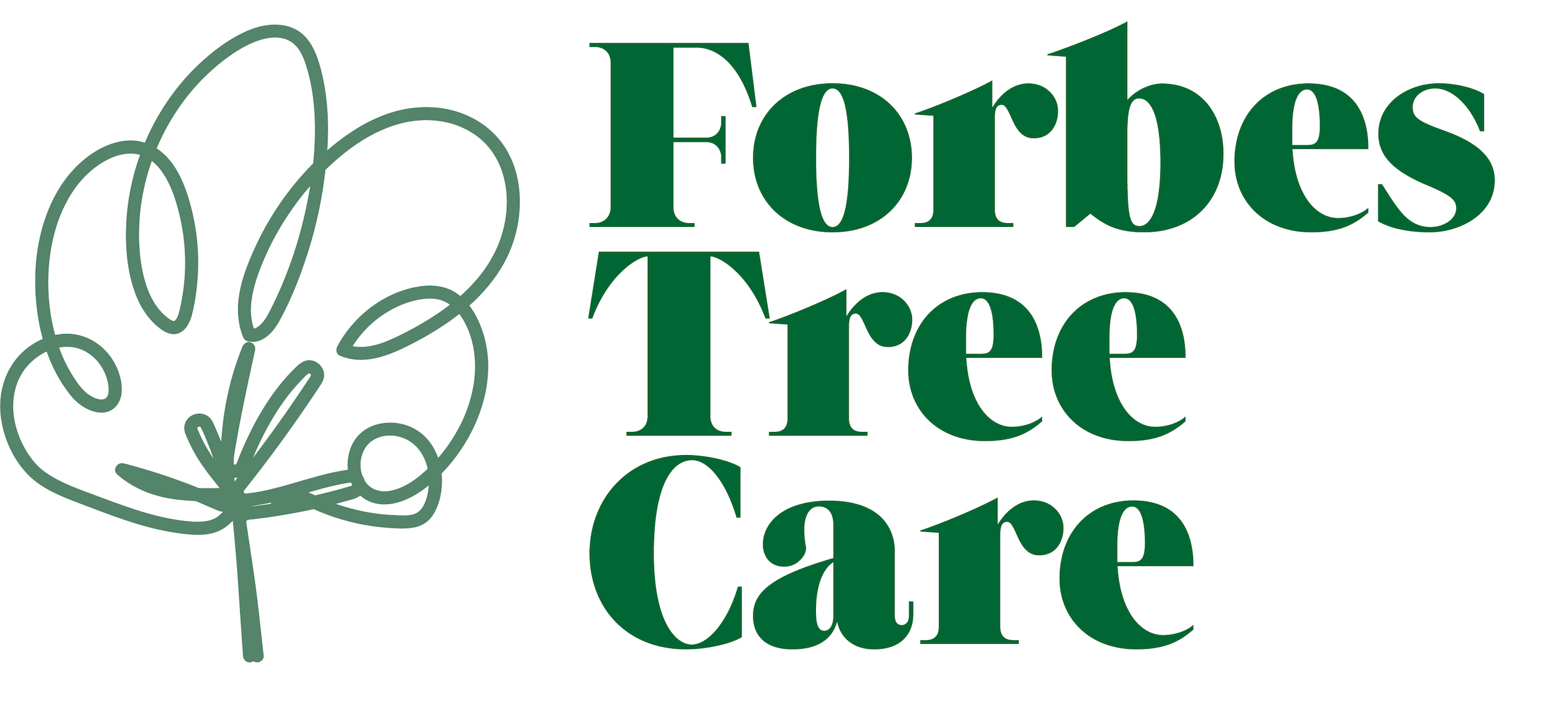Are you wondering what a tree surgeon does? Tree surgeons can perform any tree work operations, from crown reduction, crown lifting and dead wooding to tree removal or pollarding. Anyone who owns or manages land in which there are trees has a duty of care to ensure their trees are safe and don’t pose a danger to themselves or other land users. If you have a tree in your garden, it is probably worth seeking advice on its condition and whether it needs any tree care.
Read on to learn exactly what a tree surgeon can do to help you.
What is a Tree Surgeon?
A tree surgeon or “arboriculturist” is a trained specialist who can advise on and carry out pruning or tree felling using advanced specialist techniques. They specialise in the care, maintenance, and management of trees. Their role is crucial in ensuring the health and safety of trees, as well as mitigating potential risks posed by diseased or hazardous trees.
What Does a Tree Surgeon Do?
Tree surgeons can perform a range of different tasks, including:
- Crown reductions and pruning
- Crown lifting
- Tree pollarding
- Dead wooding
- Tree removal
- Tree stump and root grinding
- Tree surveys and risk assessments
- Consulting and planning
- Tree planting and transplanting
A good tree surgeon can advise you on what your tree requires based on health and safety, aesthetics and, most importantly, good arboricultural practice.
Check out the full range of services Forbes Tree Care offers here.
Crown reduction & pruning
Sometimes, a tree may have outgrown the space, be growing too near a building, or have a “defect, ” meaning it needs to be pruned to make it safer. Crown reduction reduces the overall size of the tree, shortening the branch lengths on the top and sides. Tree surgeons often use a rope and harness to climb the tree and use chainsaws to cut the branches. This requires specialist training, so the homeowner or layperson should not attempt it.
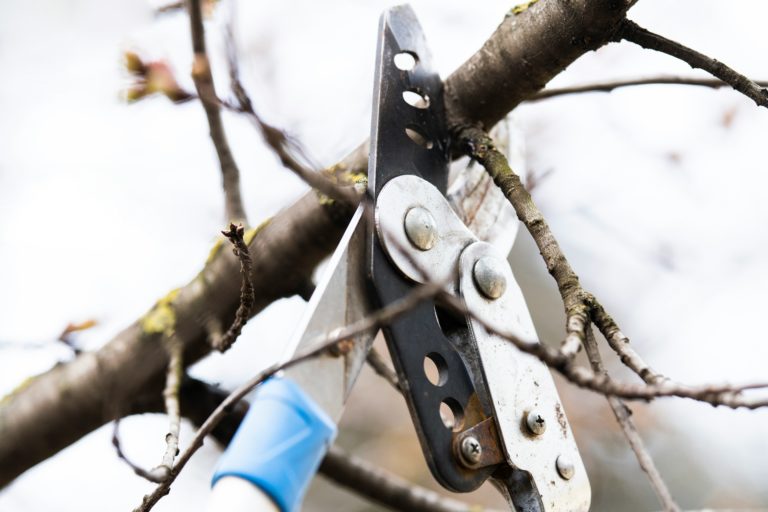
Crown lifting
Crown lifting entails the selective removal of lower branches from the main trunk or scaffold branches of a tree. This technique is useful for letting more light into a garden, getting clearance from the pavement or road or improving the aesthetics of the tree. When performed correctly by an experienced tree surgeon, crown lifting contributes to the tree’s health by increasing airflow, reducing disease risk, and redirecting energy to the upper branches without compromising structural integrity.
Pollarding
Pollarding is the process of removing all of the leafy growth on a tree, leaving a framework of branches which produce new shoots. This pruning technique involves cutting off the upper branches of a tree, promoting a dense head of foliage to regrow. Pollarding is typically done on a cycle of 3-5 years. This technique is helpful to restrict root growth or let a lot more light into a garden.
Learn more about our tree pollarding services here.
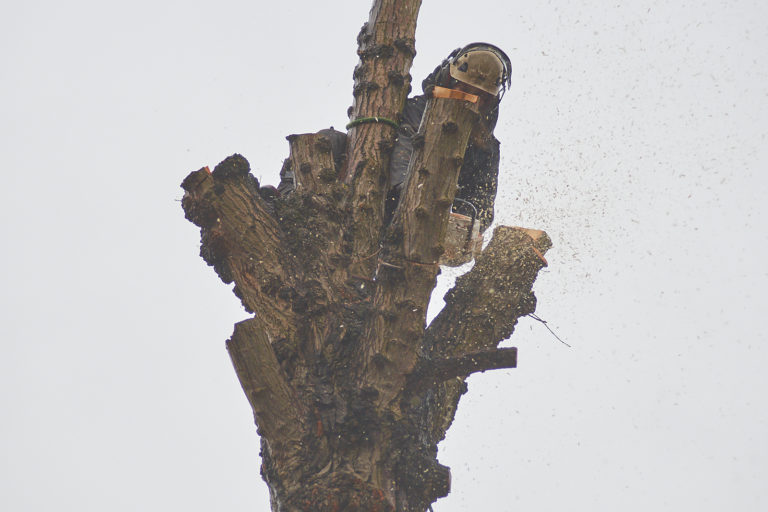
Dead Wooding
Dead wooding is the process of removing dead, dying, or diseased branches from a tree’s canopy. It helps to remove potential hazards posed by brittle, compromised limbs while promoting the tree’s overall health and vigour by allowing it to redirect resources towards healthy growth.
Tree removal
Sometimes, a tree needs to be removed because it is in poor condition or is damaging a property. Tree removal should be considered a last resort and done only after exploring all other options to preserve the tree. A professional tree surgeon will have all of the necessary experience required to fell a tree safely.
There are often alternative methods that can be used to save the tree, such as pruning, cabling, or leaving a high stump that can be left to regrow. If removal is absolutely necessary, working with a sustainable tree surgeon who will provide options for reusing or recycling the timber is best.
Learn more about our tree felling services here.
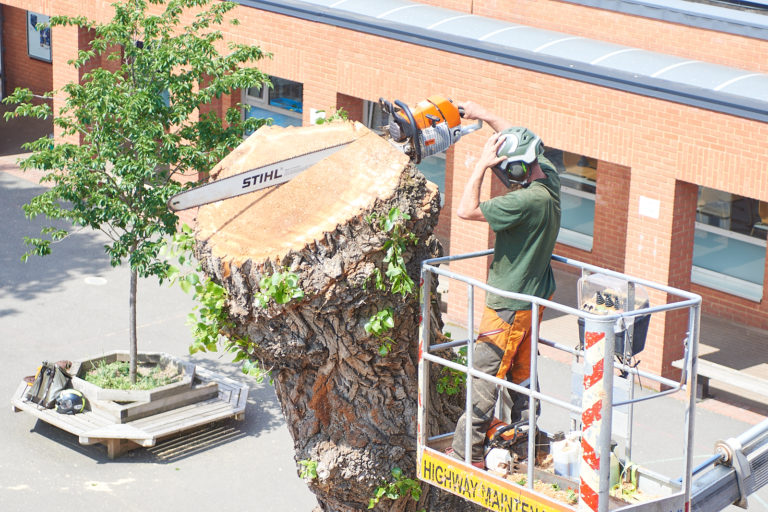
Tree Stump & Root Grinding
After removing a tree, the remaining stump and root system often need to be addressed by a tree surgeon who uses a specialised machine to grind down the stump and root flare several inches below ground level. Removing a tree stump and roots eliminates tripping hazards and clears the area for new landscaping or construction.
Learn more about our tree stump removal services here.
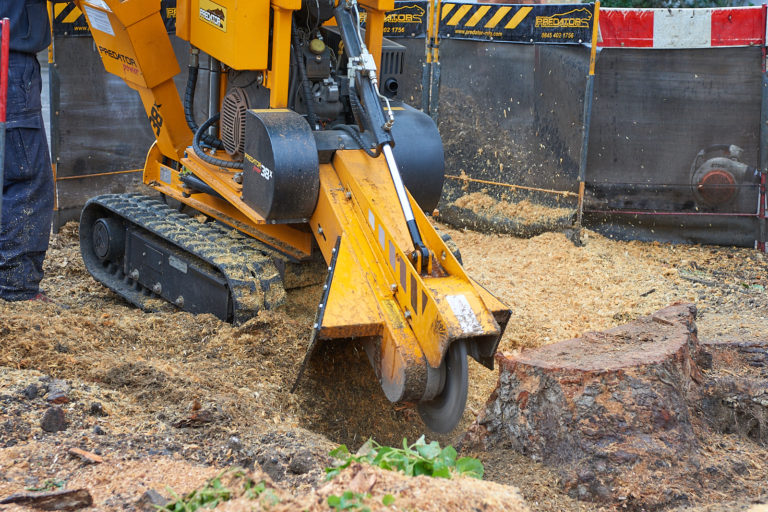
Tree Surveys & Risk Assessments
Certified arborists can conduct detailed evaluations of trees, documenting their species, size, condition, and potential risks they may pose to people or property. During these assessments, they carefully analyse structural defects, disease, decay, root problems, and proximity to targets. Risk assessments are critical in high-traffic areas like parks, schools, and residential neighbourhoods to help balance tree preservation with public safety.
Learn more about our tree survey services here.
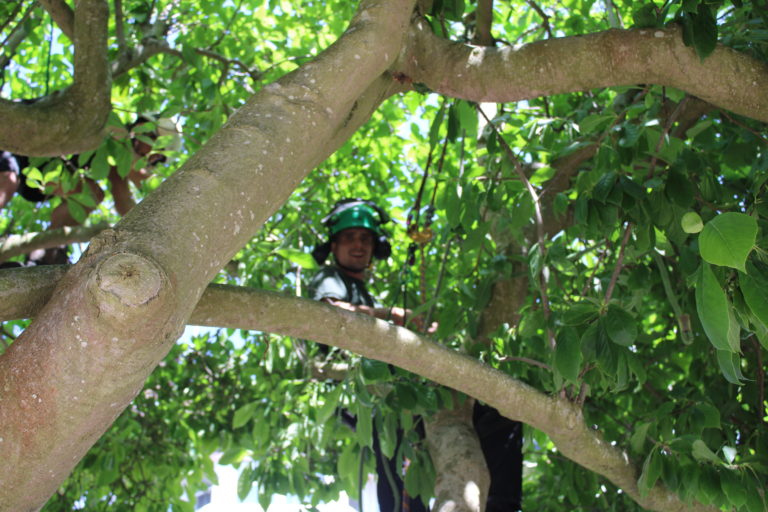
Consulting & Planning
Tree surgeons and arborists provide valuable consulting and planning services to residential and commercial clients, municipalities and government agencies. Their expertise is sought for developing urban forestry management plans, green space planning, and tree protection strategies during construction projects. They assess existing tree populations, identify species diversity, age distributions, and potential environmental impacts, and recommend planting programmes, tree preservation ordinances, and sustainable management practices to promote healthy urban canopies.
Tree Planting & Transplanting
Tree surgeons offer professional planting services, carefully considering the right tree species for a given site based on factors like soil conditions, available space, and environmental tolerances. They can also help transplant trees during construction projects or relocate them for better growing space.
Learn more about our tree planting services here.
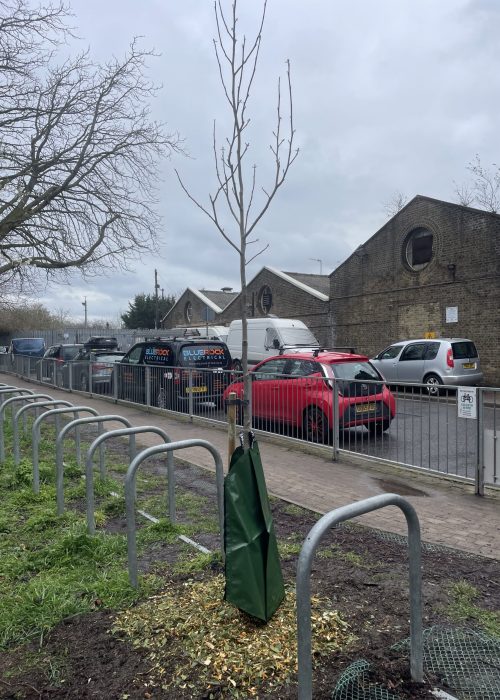
Emergency Tree Services
When severe storms, high winds, or other adverse weather events strike, trees can become compromised and pose serious hazards. In such emergency situations, rapid response tree surgeons can quickly assess and mitigate risks from damaged, leaning, or fallen trees. Using specialised equipment like cranes, rigging gear, and aerial lifts, they can safely remove precariously hung branches or toppled trunks from structures, roads, and powerlines.
Learn more about our emergency response services here.
Signs You Should Hire a Tree Surgeon
It’s not always obvious to a tree owner when they should hire a tree surgeon. Some of the reasons for hiring a tree surgeon are:
- You have a dying or dead tree (indicated by brown or no leaves)
- You have a diseased tree (indicated by exudations from the bark, fungus growing from the tree or cracks in the tree)
- The tree has outgrown the space and needs to be pruned or made smaller
- You have a tree that overhangs a public space, and you are concerned about it’s safety
- Branches are rubbing against structures like roofs, windows, or power lines
- You notice cavities, seams, or other structural defects in the trunk or major branches
- After a storm, the tree appears damaged, leaning excessively or has broken limbs hanging
- Construction work is planned near the tree, requiring protection or possible transplanting
- The tree’s roots are uplifting sidewalks, driveways, or foundations
- You want to plant a large tree and need guidance on proper tree selection and planting
Your tree is protected by a tree preservation order (TPO), and so requires special consideration
Seeking professional arborist services ensures your trees remain healthy, structurally sound, and properly managed to prevent property damage or safety hazards.
Should I Perform DIY Tree Surgery?
The short answer is no. Tree surgery should always be carried out by a trained professional with the correct level of public liability insurance. Tree surgery is a dangerous operation and, if done incorrectly, can cause serious injury or damage to property.
Attempting DIY tree work puts your safety at risk, as it involves working at heights, operating powerful equipment, and dealing with heavy, unstable loads. Even seemingly simple pruning tasks can go wrong without the proper knowledge and experience, potentially leading to permanent damage or even killing the tree. Hiring a certified arborist ensures the work is completed safely and correctly, prolonging the tree’s health and avoiding costly mistakes.
Benefits of Hiring a Professional Tree Surgeon
A professional tree surgeon will be properly insured and correctly trained in all aspects of tree surgery necessary to perform tree work operations. They can also inspect your tree and advise you on an appropriate course of action. The consequences of hiring a tree surgeon that is not appropriately insured or trained could be serious. Potential damage to property or serious injury are the two obvious reasons to hire a professional.
1. Appropriate tree surgeon public liability insurance
Tree surgeons or “arboriculturists” need appropriate public liability insurance. It takes years of training to be qualified as a professional tree surgeon, and any reputable company should be able to show you their insurance certificate. The consequences of it going wrong are huge.
2. Serious injury
Tree surgery is a dangerous business. Tree surgeons use chainsaws, which can potentially cause serious injury to themselves or others. It’s crucial the tree surgeon you use has the relevant NPTC or Lantra qualifications required to do the job. This will ensure they use best practice and reduce the chance of injury.
3. Understanding legal requirements
Professional tree surgeons understand the legal requirements surrounding tree work, especially when it comes to trees protected by a Tree Preservation Order (TPO). Cutting down or pruning a protected tree without prior consent can result in hefty fines. A qualified arborist will navigate these legalities to ensure compliance.
4. Sustainable practices
Reputable tree surgeons follow sustainable practices aimed at preserving trees wherever possible. They will explore pruning and trimming options before recommending felling as a last resort. If a tree must be removed, responsible tree surgeons will replant new trees and reuse any timber products to minimise waste. Their priority is promoting urban forestry and maintaining a healthy tree population.
5. Proper equipment
Tree surgeons often need to climb trees using specialised techniques and equipment such as:
- Rope and harness systems
- Ladders
- Aerial lifts or bucket trucks
- Climbing spikes (gaffs) attached to their boots
Proper training and safety gear, such as harnesses, helmets, and ropes, are essential for tree surgeons to climb trees safely and efficiently while minimising damage to the tree.
How To Hire a Reputable Tree Surgeon
It can be hard to know whether the company you are using is experienced and reputable. Some things to look out for are:
- Good reviews on the internet (Google, Checkatrade, Which? Trusted Traders, Bark, MyBuilder and Facebook are good places to check)
- A good website (including photos of the staff so you know who you’re hiring)
- A member of the Arboricultural Association
- Appropriate tree surgeon insurance and NPTC or Lantra training
- Willingness to provide references from past clients
- Use of proper safety gear and equipment during site visits
Forbes Tree Care - Trusted Tree Surgeons in North London
Forbes Tree Care are the top tree surgeon specialists in North London. Operating since 2010, Forbes Tree Care has a committed, experienced staff group who really care about trees. Forbes Tree Care offers free, no-obligation quotes, professional advice and quality customer service. Sustainability is at the heart of everything Forbes Tree Care does and, where possible, we retain and maintain trees for the future. Check out our online reviews and visit forbestreecare.com for more information.


